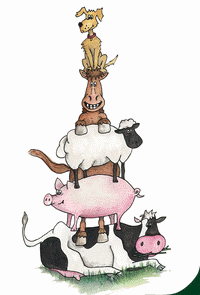Annual World Zoonosis Day
To mark the fourth annual World Zoonosis Day today – Monday July 6th, the global animal medicines association HealthforAnimals has joined leading voices to highlight the economic paradox of the rabies crisis and call for urgent action to halt the spread of rabies and other zoonotic diseases once and for all.
Rabies is a zoonotic disease meaning that it can be transmitted from infected animals to humans, e.g. through a bite from a dog or bat. It is found on all continents except for Antarctica but thanks to rabies vaccines, it is 100% preventable. Despite this, over 60,000 people still die from rabies each year making it one of the world’s most deadly infectious diseases.
To mark World Zoonosis Day, HealthforAnimals are focusing on rabies as one zoonotic disease that can be eradicated. HealthforAnimals Executive Director, Carel du Marchie Sarvaas said: “To address the global zoonotic threat, HealthforAnimals promote the use of preventive veterinary medicines and the widespread use and development of vaccines. These play an increasingly important role in the effective control of a variety of diseases.
“However there are often barriers to implementing these technologies and the animal health industry must urgently work closely with NGOs, inter-governmental bodies, governments and regulators around the world to encourage access to medicines, in order to overcome solvable disease challenges.
“Also important, is ensuring an environment that encourages continued innovation within the animal health industry, to ensure that we remain on top of the always shifting disease-scape, as pathogens themselves, and the environment in which they exist, continually change. Preventing rabies in dogs is widely regarded as one of the best options for reducing the number of deaths in humans.”

HealthforAnimals are supportive of the work that leading not for profit, industry body and government organisations, including the Global Alliance for Rabies Control, WHO, OIE and the FAO, do to help not only raise awareness of the issue, but also improve disease surveillance and implement control strategies in at-risk areas.
Prof. Louis Nel, Executive Director of the Global Alliance for Rabies Control said: “Today marks the 130th anniversary of the successful application on a human by Louis Pasteur of a vaccine for rabies. On July 6th 1885, Pasteur used the vaccine on 9 year old Joseph Meister who was badly mauled by a rabid dog. Louis Pasteur was hailed a hero and the rabies vaccine paved the way for the development of other vaccines.
“We have come a long way since then and yet we still haven’t beaten rabies in some parts of the world. We can make rabies history if international institutions invested more in mass canine vaccinations. We know we can beat canine rabies if we vaccinate 70% of dogs. Canine vaccines are not only less expensive than injections for people; they are far less expensive than the critical care treatment of a human rabies case.
“To achieve this, the animal and human health industries need to align and secure increased support and funding from international institutions for in-country rabies control programmes. Only then can we achieve a world free of rabies.”
To help raise awareness of the growing risk zoonotic diseases, including rabies, pose to human life, and animal health and welfare, HealthforAnimals have created an infographic that highlights the economic impact and global threat:
For more information about zoonotic disease and rabies specifically, visit the HealthforAnimals website at www.healthforanimals.org

